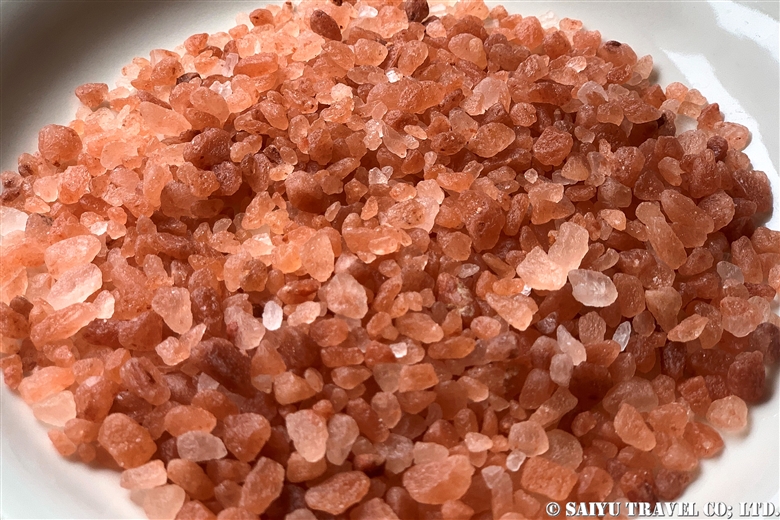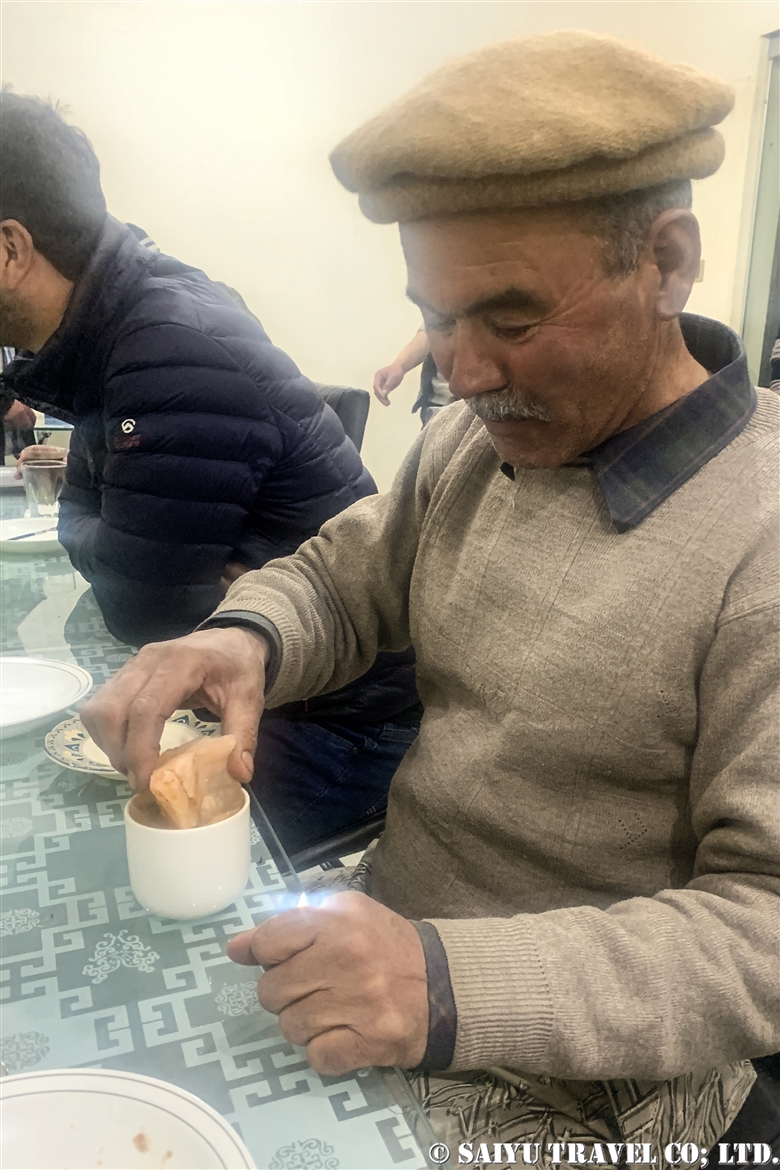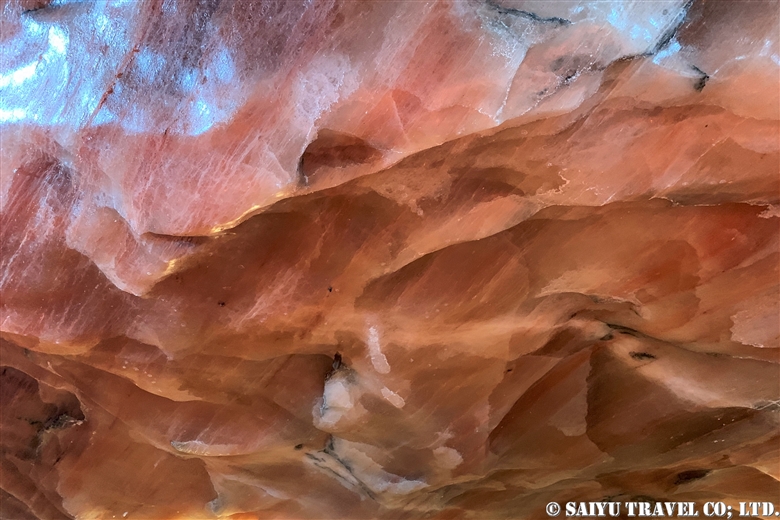
The Khewra Salt Mine is the world’s second largest rock salt mine, where it is commonly sold as “pink salt” or “Himalayan rock salt.”
This rock salt mine on the Potohar Plateau in the Salt Range of the Punjab Region, which was discovered back in the time of King Alexander the Great. The salt was said to be discovered in 326 BC when the horse of Alexander the Great was licking the ground, during his expedition to India. The commercial mining began during the Mughal Empire, and the main tunnel was excavated in 1872, during the British Indian Empire, when the large-scale mining began.
Articles about pink salt and Himalayan rock salt:Salt Range- The salt range that produces the Himalayan rock salt

Visitors can see the operations inside the Khewra Rock Salt Mines. In 1930, the British Indian Empire started a 600mm minecart train for tourists to be able to go inside the mines.

We entered the mine using this minecart train. The Salt mine has a section for tourists, and a section that is still actively being mined.
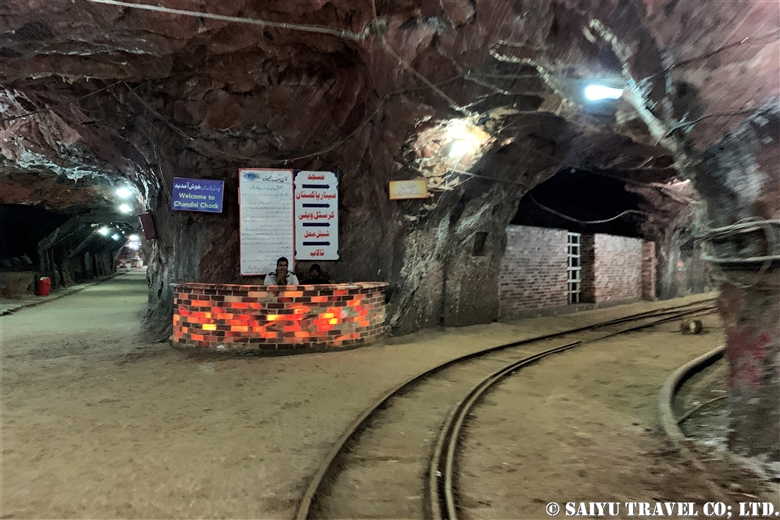
Once your train reaches Chandni Chowk, you will get off the train and start walking into the mine with a guide. The passengers of the minecart train are divided into groups, with tour guides who speak Urdu for the Pakistani tourists and English, for the foreigners.
On both sides of the passage, there are traces of mining dating back to the Mughal era.
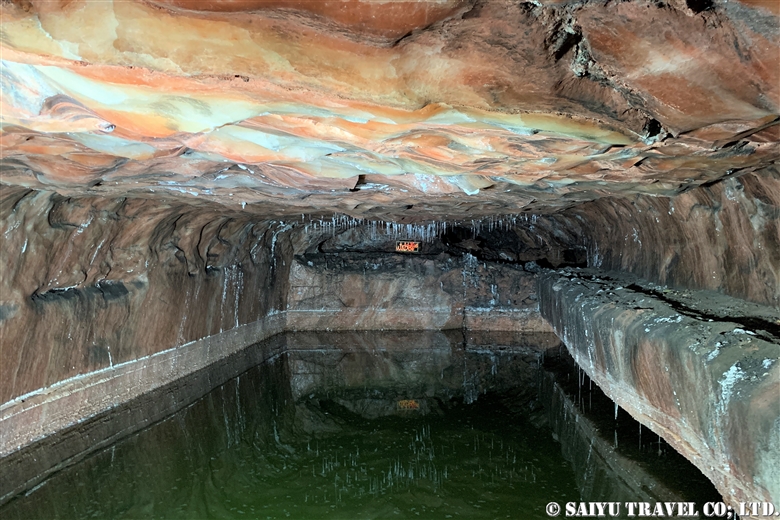
There are pools where the rainwater collects in the old quarry, and this saturated saline solution is connected by a hose and sent to the factory outside to be sold.

As you walk down the tunnel, there will appear a mosque made of the colorful salt blocks. The red colored blocks are high in iron, and the pink colored salt is high in magnesium.
This “Rock Salt Mosque” is based on the motif of Badshahi Mosque in Lahore, and according to the guide it was built more than 50 years ago.
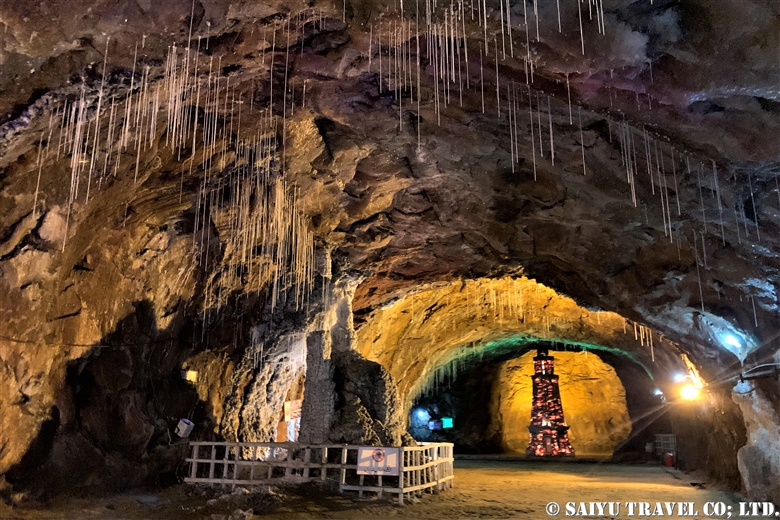
Then, we reached a space that was like a large hall. There were salt icicles and stalactite formations. The cannons that were used in old mining operations were also on display. And in the back, there was a famous monument, called the “Minar-e-Pakistan”。

These two monuments, the Minar-e-Pakistan and the Badshahi Mosque are often mentioned in the advertisements for the Salt Mine. They were probably built around the same time.
The original Minar-e-Pakistan in Lahore was built in 1940, where the All-Indian Muslim Alliance passed the Lahore Resolution (later called the Pakistani Resolution). It was the first official statement calling for the independence of a Muslim homeland in British India and is a symbol of the birth of Pakistan.
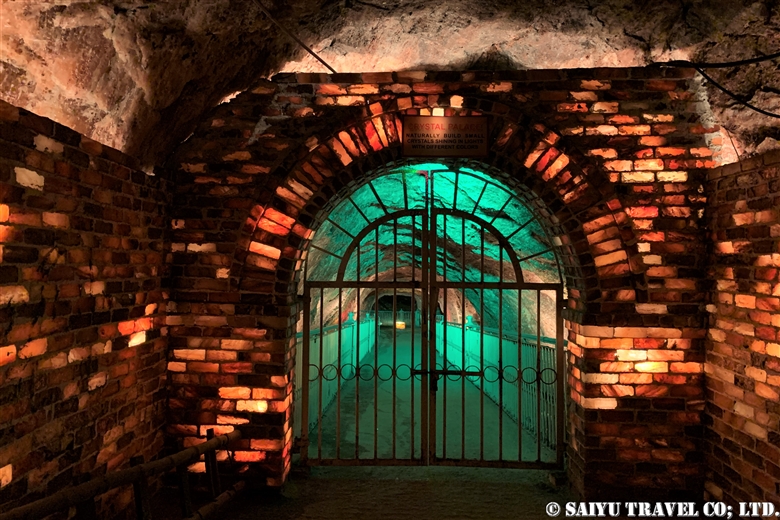
Then just a short distance down the main path, is the Crystal Palace.
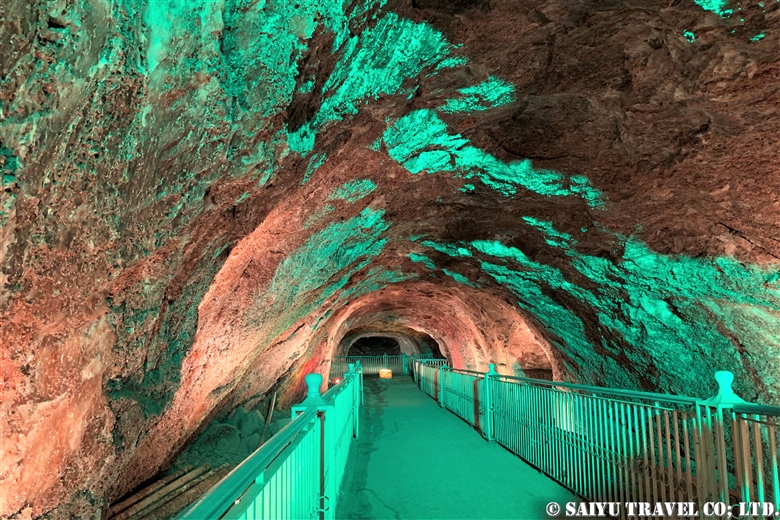
There is a light that shines on the tunnel walls that changes from Green, to red, then blue; so it was too bad that we couldn’t see the original color of the walls. But the surface of the walls were shining with salt crystals; which had various shapes like small dice, and columns.
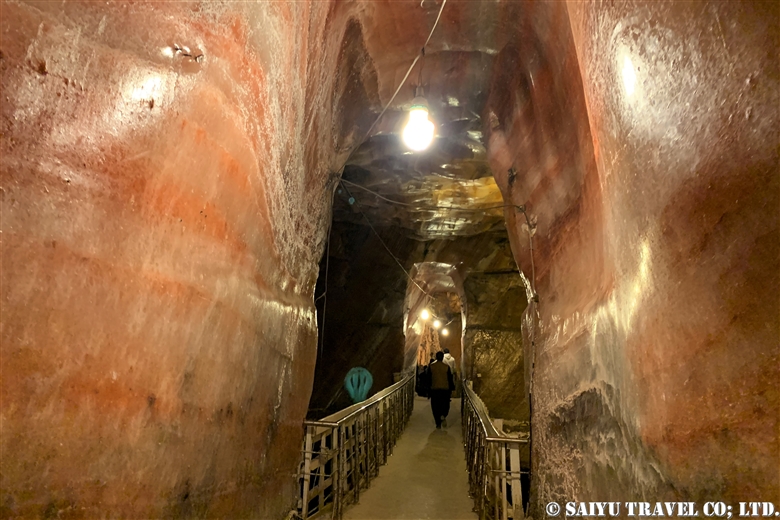
This area called Sheesh Mahal (Hall of Mirrors), with the transparent wall of shiny pink salt.
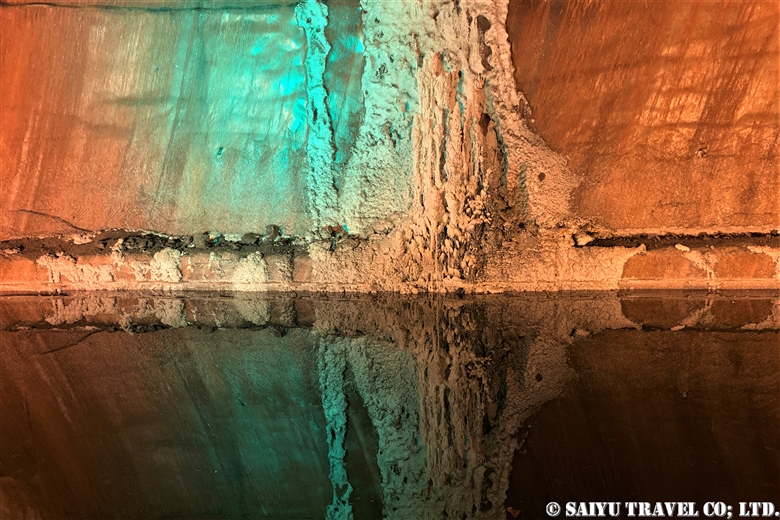
Towards the back of Sheesh Mahal, the surface of the salty water reflected the crystal-encrusted walls like a mirror.

With this, we made the round-trip back to the minecart train and came out the same way we went in.
The Khewra Salt Mine is an easy day trip from Islamabad and Lahore. Not only is this the magnificent place where the continents of India and Eurasia collided, it is also where Alexander the Great’s war horse discovered the rock salt, and where you can experience the mines as they were opened in the Mughal era…the visit is an adventurous and historic trip back in time.
Photo & text: Mariko SAWADA
Visit: Jan 2022, Khewra Salt Mine, Punjab
Tag : Pink Salt , Pakistan Travel Blog , Khewra Salt Mine , Indus Caravan , Punjab Urial , Pothohar Plateau , Jhelum River , Saiyu Travel Pakistan , the Battle of Hydaspes , Pakistan Travel company , Khewra Sale Mines Railway , Pakistan tour operator , Pakistan Photography Tour , Salt Range , Himalayan Rock Salt , Pakistan Blog














